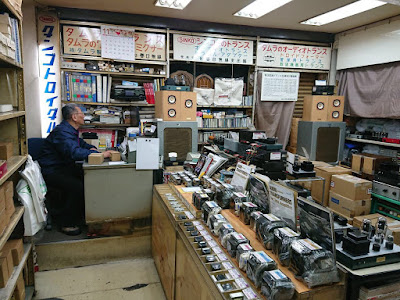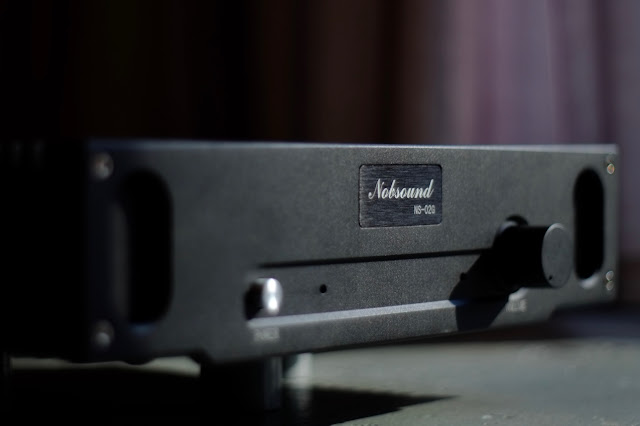OB/755A
Despite the fact that Joe Roberts and I both revere the 755A, he never thought highly of my open baffle set-up. To this day, I'm still baffled as to why he featured my home-brewer article in Sound Practices. 😉 I enjoy the engulfing planar-like airiness of the 755A/OB combo which Joe finds lifeless, boring and lacking in snap.
 |
| OB + 755A |
Could the dip in this RTA trace be indicating a lack of snap? 😜
Custom-built Altec 618 + 755A
 |
| J-Rob custom 618 cabinet |
Back in the mid-90s, I owned a pair of original Altec 618s. Those sounded boxy and colored, perhaps due to their lightweight construction. So I traded them for a pair of early sand casted 811 horns...😧 Oh well, live and learn. 😁
When my friend Chong gave me a pair of well braced vintage DIY 618 boxes (allegedly built by an ex-WE engineer and used to house a pair of WE755As), I understood the snap that ticked the Joe-man.
This is the nicest and most modern looking RTA trace in this survey! Loaded with Altec 755As, the sound is snappy and dynamic while retaining that warm and realistic sheen in the midrange, which evades most speakers marketed in the past 50 years. Although some listeners may still find that quality a vintage coloration...
A visit to J-Rob's
People don't always have to agree to remain friends
Case in point: Joe seems to prefer the Japanese 755 - Lafayette SK98/Hamlin/Pioneer PIM8L - over the ferrite 755C. However, if push comes to shove, I'd take the 755C over the various permutations of the PIM8/20L even if I played a role in reintroducing its virtues to the world. Maybe it's just my sentimental attachment to the 755Cs since they were my very first high-efficiency drivers?
J-Rob sez, "I shouldn't even be talking to you since you like 755Cs." 😆
When I visited Joe in the summer of 2018, he had a pair of 4 cubic foot WE753A look-alike cabs that house Western Electric WE728Bs driven by a spruced up Dyna SCA35 which was recently replaced by a J-Rob cloned Peerless A100 PP 6A5G amp built during the Sound Practices era. Signal source is a Mac Mini>Tidal>Audirvana>Wavelength Audio Brick DAC.
Despite the natural high frequency roll off of the 12" WE728B, it sounded very full-range because of its rich overtones. That is, overtones as musicians use it to describe musical instruments. A high quality violin, piano, or any musical instrument for that matter, possesses rich overtones and this has nothing to do with high frequency extension. Even FFT analyses have failed to identify why del Gesus and Strads sound harmonically richer and have greater carrying power in a good acoustic space compared to a painstakingly crafted modern violin.
I was looking forward to hearing the Silbatone SE300B amp on the floor but Joe hasn't gotten around to re-wiring it for 120V, and also to LPs, but the Gates CB500 was waiting for a resurfaced idler wheel. Then he showed me his next project - Klangfilm horn repros (center background) + Altec and JBL large format compression drivers.
Finally, I was introduced to the pair of Altec 755As perched on top of the WE753C-like cabs. I was quite impressed with the sounds emanating from the 755As!
Since there's no sign that he'll be back anytime soon, with his permission, I took it upon myself to write about this 755A cabinet breakthrough.
 |
| Silbatone/Dr. Bae WE/Altec 755A box plan Copyright Silbatone Acoustics |
Under no circumstances should this be used for commercial purposes!
Let's see if that works...truth be told, I am well aware that there have been a few enterprising individuals who have benefitted commercially from projects published in this blog. So I'm not holding my breath.
 |
| John Piro Clone Build Interior walls + back lined with two layers of Kimpak |
I sent the drawing to my buddy John Piro shortly after my Altec 753C cabinets were delivered.
Can anyone distinguish JP's clone from the original Silbatone box?
 |
| Dr. Bae designed Silbatone box + 755A |
J-Rob comments:
"The cabinets were designed by genius Silbatone engineer Dr. Stefano Bae as a group project for the Silbatone-sponsored DIY/Western Electric forum in South Korea. 100 pairs were quickly sold out, immediately driving up the world price for 755As. The original uses Silbatone's custom silver litz wire, which is said to be an essential ingredient of the original recipe, and top shelf WBT connectors.
Over the years Silbatone designed and made literally dozens of experimental boxes, including back horns for up to four (755A) drivers per side. This was probably the most successful, although rather modest.
My analysis of this untuned little cabinet is that it falls under the 'small box with a hole in it' design paradigm."
Unlike before when I felt the need for at least SE300B power to make the OB/755A sing, now I'm enjoying near-field sounds from my JP cloned Silbatone/Dr. Bae boxes + Altec 755As driven by an SE46 amp with tiny Noguchi FM6WS Finemet OPTs.
The SE2A3dx which normally drives the Altec 753Cs in the main listening area had no trouble driving the Altec 755As in Silbatone boxes to moderately high SPL levels.
Even without the silver litz wire and high tech WBT connectors, I heard all the virtues of the slant 618 box + open baffle combined = detail, snap, macro and micro dynamics from the 618 box + airiness and lack of vintage boxy colorations from the open baffle.The Dr. Bae/Silbatone cabinet transported the 70 year old 755A design to the 21st century in a monitor-sized package!




















































